Violin on:
[Wikipedia]
[Google]
[Amazon]
The violin, sometimes known as a '' fiddle'', is a wooden chordophone ( string instrument) in the violin family. Most violins have a hollow wooden body. It is the smallest and thus highest-pitched instrument ( soprano) in the family in regular use. The violin typically has four strings (some can have five), usually tuned in
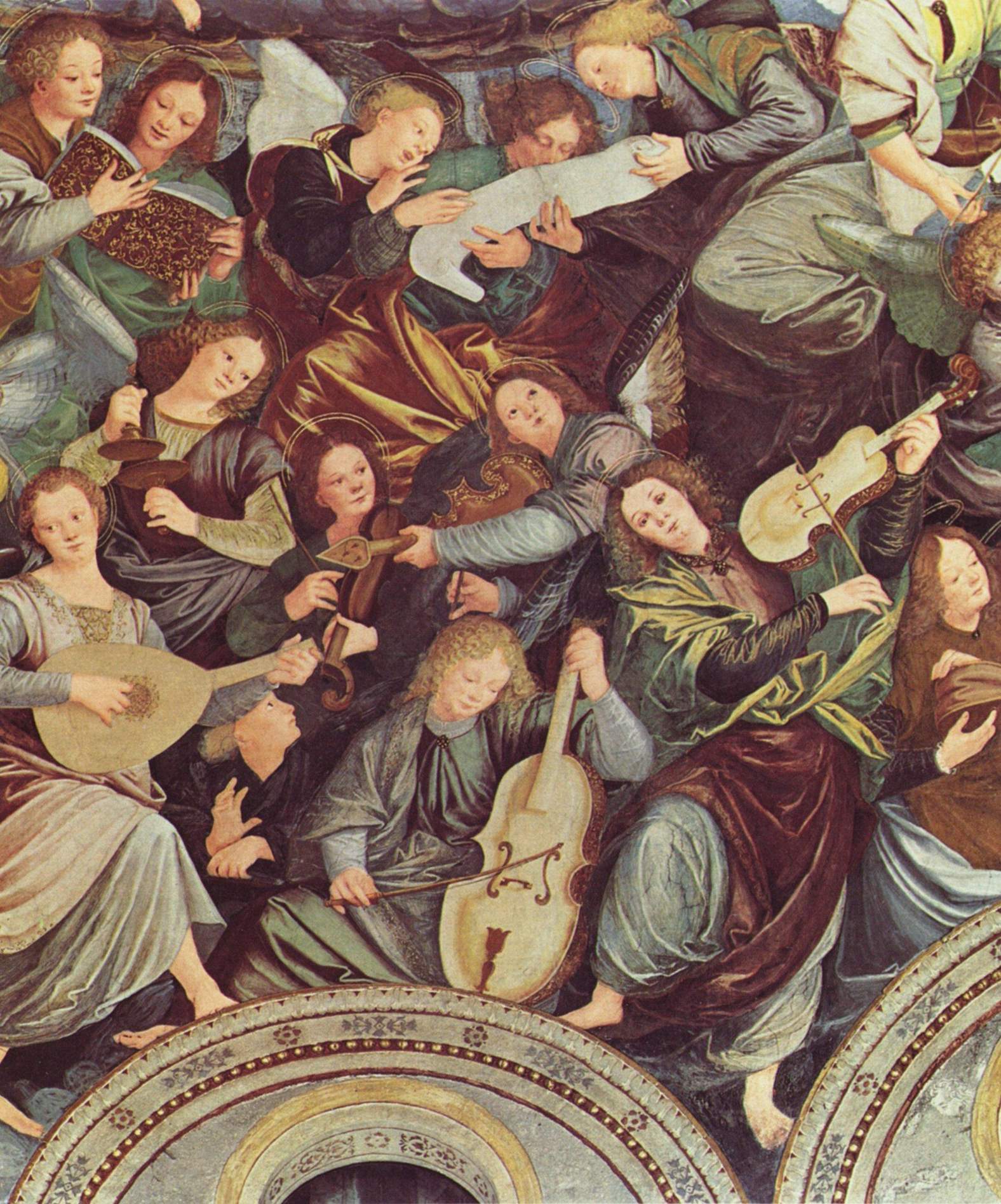 The earliest stringed instruments were mostly plucked (for example, the Greek
The earliest stringed instruments were mostly plucked (for example, the Greek 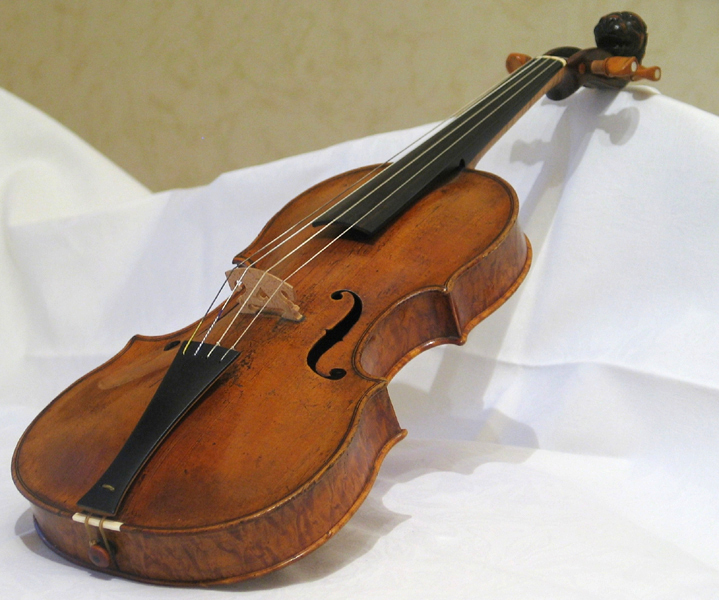 * The school of
* The school of

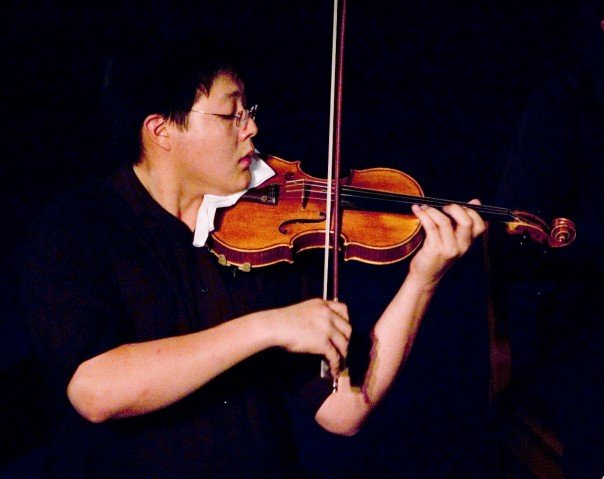 A violin generally consists of a
A violin generally consists of a 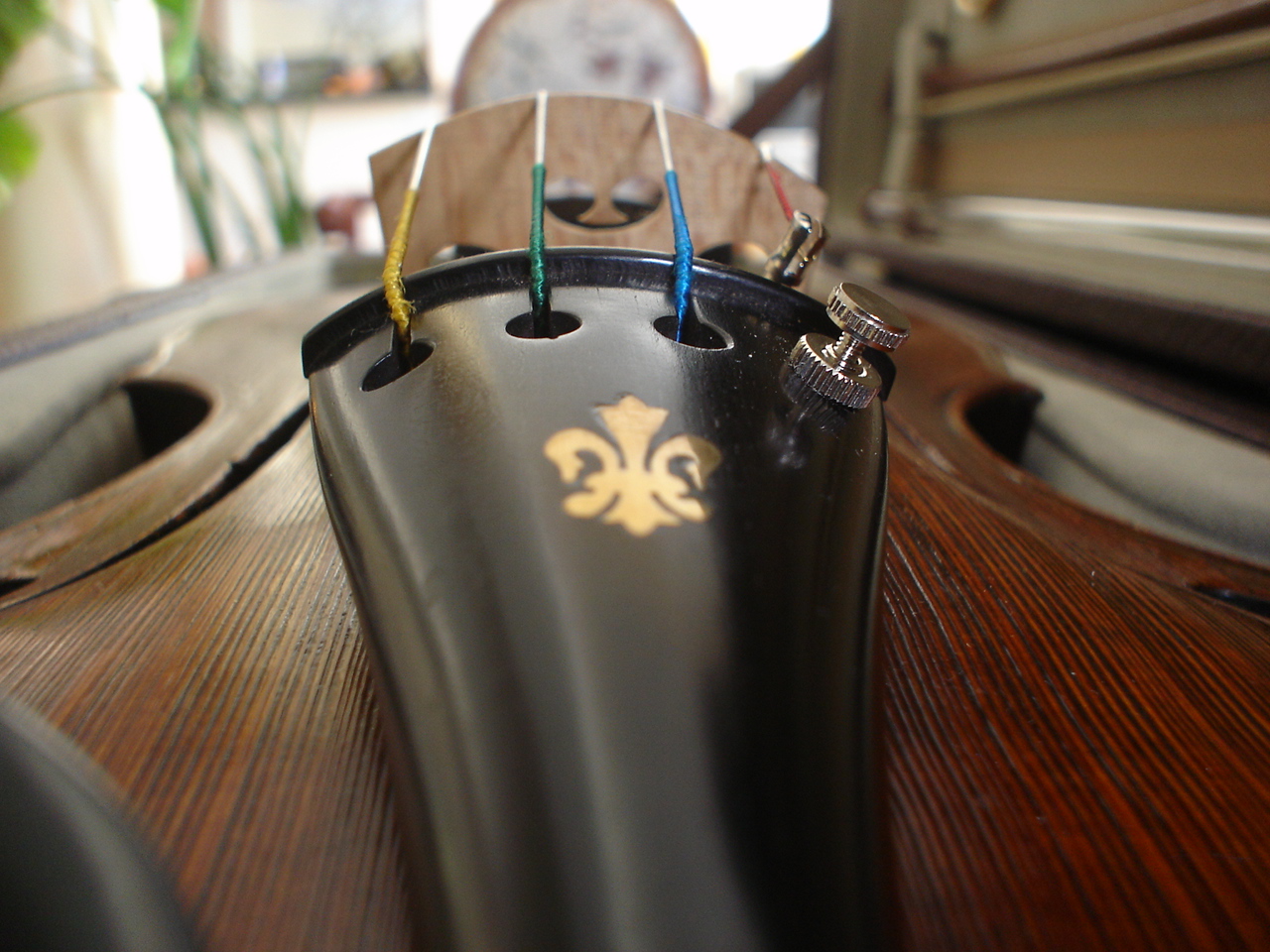
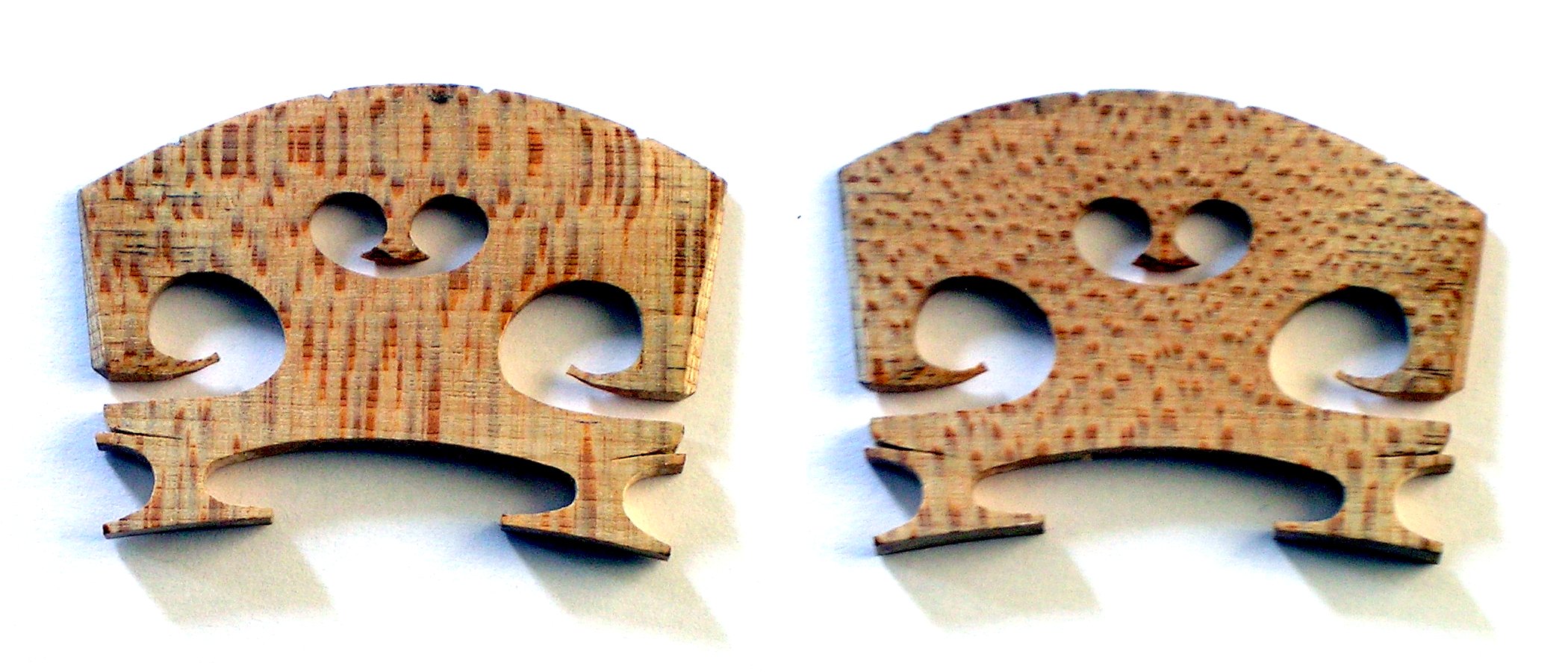
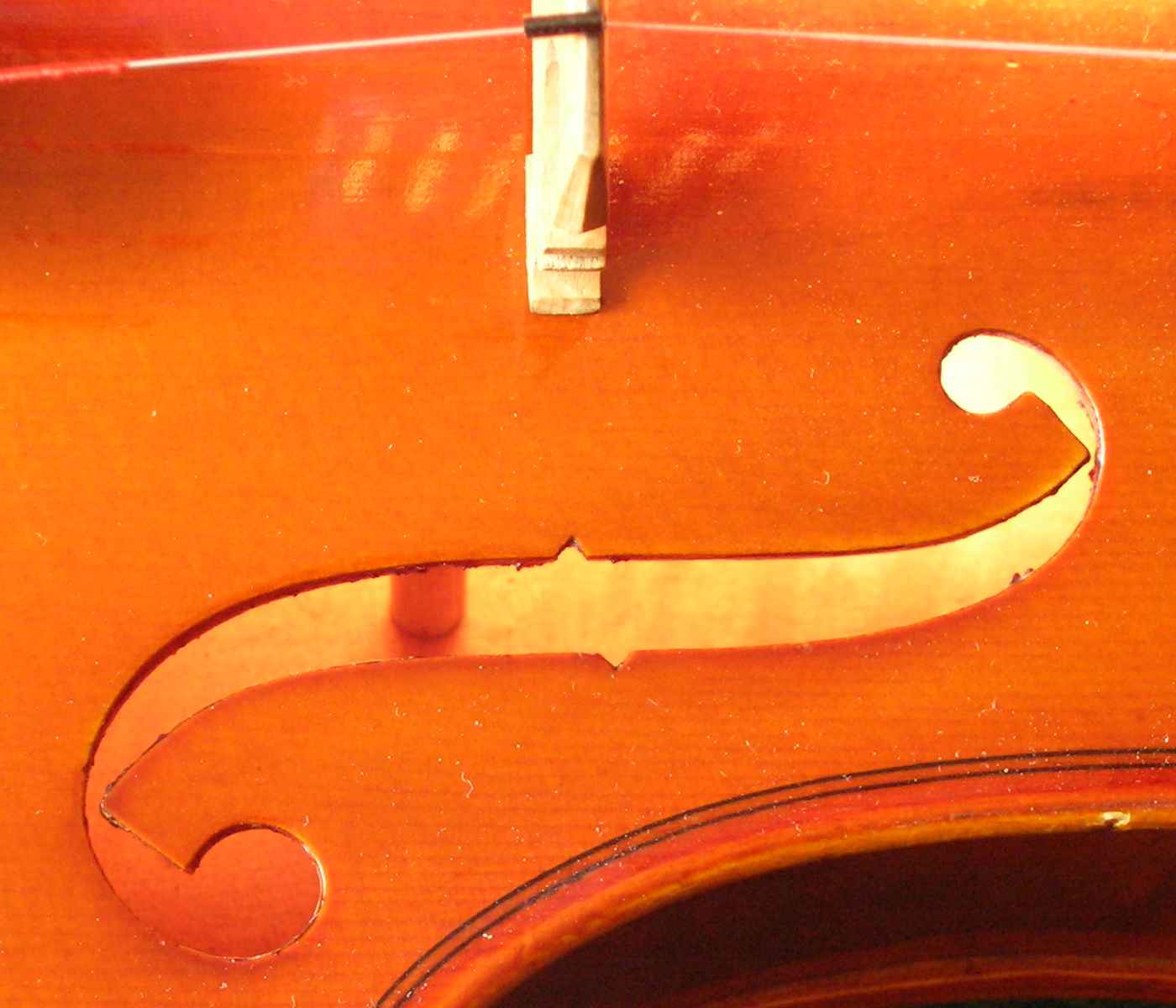 The
The
perfect fifth
In music theory, a perfect fifth is the musical interval corresponding to a pair of pitches with a frequency ratio of 3:2, or very nearly so.
In classical music from Western culture, a fifth is the interval from the first to the last of five ...
s with notes G3, D4, A4, E5, and is most commonly played by drawing a bow across its strings. It can also be played by plucking the strings with the fingers ( pizzicato) and, in specialized cases, by striking the strings with the wooden side of the bow ( col legno).
Violins are important instruments in a wide variety of musical genres. They are most prominent in the Western classical tradition, both in ensembles (from chamber music
Chamber music is a form of classical music that is composed for a small group of instruments—traditionally a group that could fit in a palace chamber or a large room. Most broadly, it includes any art music that is performed by a small num ...
to orchestra
An orchestra (; ) is a large instrumental ensemble typical of classical music, which combines instruments from different families.
There are typically four main sections of instruments:
* bowed string instruments, such as the violin, viola, c ...
s) and as solo instruments. Violins are also important in many varieties of folk music
Folk music is a music genre that includes traditional folk music and the contemporary genre that evolved from the former during the 20th-century folk revival. Some types of folk music may be called world music. Traditional folk music has ...
, including country music
Country (also called country and western) is a genre of popular music that originated in the Southern and Southwestern United States in the early 1920s. It primarily derives from blues, church music such as Southern gospel and spirituals, o ...
, bluegrass music
Bluegrass music is a genre of American roots music that developed in the 1940s in the Appalachian region of the United States. The genre derives its name from the band Bill Monroe and the Blue Grass Boys. Like mainstream country music, it la ...
, and in jazz
Jazz is a music genre that originated in the African-American communities of New Orleans, Louisiana in the late 19th and early 20th centuries, with its roots in blues and ragtime. Since the 1920s Jazz Age, it has been recognized as a majo ...
. Electric violins with solid bodies and piezoelectric pickups are used in some forms of rock music
Rock music is a broad genre of popular music that originated as "rock and roll" in the United States in the late 1940s and early 1950s, developing into a range of different styles in the mid-1960s and later, particularly in the United States and ...
and jazz fusion, with the pickups plugged into instrument amplifiers and speakers to produce sound. The violin has come to be incorporated in many non-Western music cultures, including Indian music and Iranian music. The name ''fiddle'' is often used regardless of the type of music played on it.
The violin was first known in 16th-century Italy
Italy ( it, Italia ), officially the Italian Republic, ) or the Republic of Italy, is a country in Southern Europe. It is located in the middle of the Mediterranean Sea, and its territory largely coincides with the homonymous geographical ...
, with some further modifications occurring in the 18th and 19th centuries to give the instrument a more powerful sound and projection. In Europe, it served as the basis for the development of other stringed instruments used in Western classical music, such as the viola. Accessed 5 September 2015.
Violinists and collectors particularly prize the fine historical instruments made by the Stradivari, Guarneri, Guadagnini and Amati families from the 16th to the 18th century in Brescia
Brescia (, locally ; lmo, link=no, label= Lombard, Brèsa ; lat, Brixia; vec, Bressa) is a city and ''comune'' in the region of Lombardy, Northern Italy. It is situated at the foot of the Alps, a few kilometers from the lakes Garda and Ise ...
and Cremona (Italy) and by Jacob Stainer in Austria
Austria, , bar, Östareich officially the Republic of Austria, is a country in the southern part of Central Europe, lying in the Eastern Alps. It is a federation of nine states, one of which is the capital, Vienna, the most populous ...
. According to their reputation, the quality of their sound has defied attempts to explain or equal it, though this belief is disputed. Great numbers of instruments have come from the hands of less famous makers, as well as still greater numbers of mass-produced commercial "trade violins" coming from cottage industries in places such as Saxony
Saxony (german: Sachsen ; Upper Saxon: ''Saggsn''; hsb, Sakska), officially the Free State of Saxony (german: Freistaat Sachsen, links=no ; Upper Saxon: ''Freischdaad Saggsn''; hsb, Swobodny stat Sakska, links=no), is a landlocked state of ...
, Bohemia, and Mirecourt
Mirecourt () is a commune in the Vosges department in Grand Est in northeastern France. Mirecourt is known for lace-making and the manufacture of musical instruments, particularly those of the Violin family. Inhabitants are called Mirecurtiens ...
. Many of these trade instruments were formerly sold by Sears, Roebuck and Co. and other mass merchandisers.
The components of a violin are usually made from different types of wood
Wood is a porous and fibrous structural tissue found in the stems and roots of trees and other woody plants. It is an organic materiala natural composite of cellulose fibers that are strong in tension and embedded in a matrix of ligni ...
. Violins can be strung with gut
Gut or guts may refer to:
Anatomy
* Abdomen or belly, the region of a vertebrate between the chest and pelvis
* Abdominal obesity or "a gut", a large deposit of belly fat
* Gastrointestinal tract or gut, the system of digestive organs
* Ins ...
, Perlon
Perlon is an electronic music record label founded in 1997 in Frankfurt, Germany, now based in Berlin, and run by Thomas Franzmann aka Zip and Markus Nikolai. It is a minimal techno and tech house label which has been characterised as one ...
or other synthetic, or steel strings. A person who makes or repairs violins is called a luthier or violinmaker. One who makes or repairs bows is called an ''archetier'' or bowmaker
A bow maker is a person who builds, repairs, and restores ancient or modern bows for bowed string instruments. These include violins, violas, cellos, double basses, viola d'amore, viola da gamba, etc.
The French word for bowmaker (bow maker) is ...
.
Etymology
The word "violin" was first used in English in the 1570s. The word "violin" comes from "Italian ''violino'', diminutive of viola. The term "viola" comes from the expression for "tenor violin" in 1797, from Italian andOld Provençal
Old Occitan ( oc, occitan ancian, label= Modern Occitan, ca, occità antic), also called Old Provençal, was the earliest form of the Occitano-Romance languages, as attested in writings dating from the eighth through the fourteenth centuries. Old ...
''viola'', hich came from
Ij ( fa, ايج, also Romanized as Īj; also known as Hich and Īch) is a village in Golabar Rural District, in the Central District of Ijrud County, Zanjan Province, Iran
Iran, officially the Islamic Republic of Iran, and also ...
Medieval Latin
Medieval Latin was the form of Literary Latin
Classical Latin is the form of Literary Latin recognized as a Literary language, literary standard language, standard by writers of the late Roman Republic and early Roman Empire. It was used f ...
as a term which means "stringed instrument," perhaps omingfrom Vitula
''Vitula'' is a genus of snout moths. It was described by Émile Louis Ragonot in 1887.
Species
* '' Vitula aegerella'' Neunzig, 1990
* '' Vitula biviella'' Zeller, 1848
* '' Vitula broweri'' (Heinrich, 1956)
* '' Vitula coconinoana'' Neunzig ...
, Roman goddess of joy..., or from related Latin verb ''vitulari'', "to cry out in joy or exaltation." The related term "'' Viola da gamba''" meaning "bass viol" (1724) is from Italian, literally "a viola for the leg" (i.e. to hold between the legs)." A violin is the "modern form of the smaller, medieval viola da braccio." ("arm viola")
The violin is often called a fiddle, either when used in a folk music context, or even in Classical music scenes, as an informal nickname for the instrument. The word "fiddle" was first used in English in the late 14th century. The word "fiddle" comes from "fedele, fydyll, fidel, earlier fithele, from Old English ''fiðele'' "fiddle," which is related to Old Norse
Old Norse, Old Nordic, or Old Scandinavian, is a stage of development of North Germanic languages, North Germanic dialects before their final divergence into separate Nordic languages. Old Norse was spoken by inhabitants of Scandinavia and t ...
''fiðla'', Middle Dutch ''vedele'', Dutch ''vedel'', Old High German
Old High German (OHG; german: Althochdeutsch (Ahd.)) is the earliest stage of the German language, conventionally covering the period from around 750 to 1050.
There is no standardised or supra-regional form of German at this period, and Old High ...
''fidula'', German ''Fiedel'', "a fiddle;" all of uncertain origin." As to the origin of the word "fiddle", the "...usual suggestion, based on resemblance in sound and sense, is that it is from Medieval Latin ''vitula''."
History
 The earliest stringed instruments were mostly plucked (for example, the Greek
The earliest stringed instruments were mostly plucked (for example, the Greek lyre
The lyre () is a stringed musical instrument that is classified by Hornbostel–Sachs as a member of the lute-family of instruments. In organology, a lyre is considered a yoke lute, since it is a lute in which the strings are attached to a ...
). Two-stringed, bowed instruments, played upright and strung and bowed
Bowed string instruments are a subcategory of string instruments that are played by a bow rubbing the strings. The bow rubbing the string causes vibration which the instrument emits as sound.
Despite the numerous specialist studies devoted to th ...
with horsehair, may have originated in the nomadic equestrian cultures of Central Asia, in forms closely resembling the modern-day Mongolia
Mongolia; Mongolian script: , , ; lit. "Mongol Nation" or "State of Mongolia" () is a landlocked country in East Asia, bordered by Russia to the north and China to the south. It covers an area of , with a population of just 3.3 millio ...
n Morin huur
The ''morin khuur'' ( mn, морин хуур, morin khuur), also known as the horsehead fiddle, is a traditional Mongolian bowed stringed instrument. It is one of the most important musical instruments of the Mongol people, and is considered a ...
and the Kazakh
Kazakh, Qazaq or Kazakhstani may refer to:
* Someone or something related to Kazakhstan
*Kazakhs, an ethnic group
*Kazakh language
*The Kazakh Khanate
* Kazakh cuisine
* Qazakh Rayon, Azerbaijan
*Qazax, Azerbaijan
*Kazakh Uyezd, administrative dis ...
Kobyz. Similar and variant types were probably disseminated along east–west trading routes from Asia into the Middle East, and the Byzantine Empire
The Byzantine Empire, also referred to as the Eastern Roman Empire or Byzantium, was the continuation of the Roman Empire primarily in its eastern provinces during Late Antiquity and the Middle Ages, when its capital city was Constantin ...
.
According to ''Encyclopædia Britannica
The ( Latin for "British Encyclopædia") is a general knowledge English-language encyclopaedia. It is published by Encyclopædia Britannica, Inc.; the company has existed since the 18th century, although it has changed ownership various ...
'', the direct ancestor of all European bowed instruments is the Arabic
Arabic (, ' ; , ' or ) is a Semitic language spoken primarily across the Arab world.Semitic languages: an international handbook / edited by Stefan Weninger; in collaboration with Geoffrey Khan, Michael P. Streck, Janet C. E.Watson; Walte ...
''rebab
The ''rebab'' ( ar, ربابة, ''rabāba'', variously spelled ''rebap'', ''rubob'', ''rebeb'', ''rababa'', ''rabeba'', ''robab'', ''rubab'', ''rebob'', etc) is the name of several related string instruments that independently spread via ...
'' (ربابة), which developed into the Byzantine lyra by the 9th century and later the European rebec. Several sources suggest alternative possibilities for the violin's origins, such as northern or western Europe. The first makers of violins probably borrowed from various developments of the Byzantine lyra. These included the vielle (also known as the ''fidel'' or ''viuola'') and the '' lira da braccio''.
The violin in its present form emerged in early 16th-century northern Italy
Northern Italy ( it, Italia settentrionale, it, Nord Italia, label=none, it, Alta Italia, label=none or just it, Nord, label=none) is a geographical and cultural region in the northern part of Italy. It consists of eight administrative Regions ...
. The earliest pictures of violins, albeit with three strings, are seen in northern Italy around 1530, at around the same time as the words "violino" and "vyollon" are seen in Italian and French documents. One of the earliest explicit descriptions of the instrument, including its tuning, is from the ''Epitome musical'' by Jambe de Fer, published in Lyon
Lyon,, ; Occitan: ''Lion'', hist. ''Lionés'' also spelled in English as Lyons, is the third-largest city and second-largest metropolitan area of France. It is located at the confluence of the rivers Rhône and Saône, to the northwest of ...
in 1556. By this time, the violin had already begun to spread throughout Europe
Europe is a large peninsula conventionally considered a continent in its own right because of its great physical size and the weight of its history and traditions. Europe is also considered a subcontinent of Eurasia and it is located enti ...
.
The violin proved very popular, both among street musicians and the nobility; the French king Charles IX ordered Andrea Amati to construct 24 violins for him in 1560. One of these "noble" instruments, the ''Charles IX'', is the oldest surviving violin. The finest Renaissance carved and decorated violin in the world is the Gasparo da Salò (1574) owned by Ferdinand II, Archduke of Austria and later, from 1841, by the Norwegian virtuoso Ole Bull, who used it for forty years and thousands of concerts, for its very powerful and beautiful tone, similar to that of a Guarneri. "The Messiah" or ''"Le Messie"'' (also known as the "Salabue") made by Antonio Stradivari
Antonio Stradivari (, also , ; – 18 December 1737) was an Italian luthier and a craftsman of string instruments such as violins, cellos, guitars, violas and harps. The Latinized form of his surname, '' Stradivarius'', as well as the col ...
in 1716 remains pristine. It is now located in the Ashmolean Museum of Oxford
Oxford () is a city in England. It is the county town and only city of Oxfordshire. In 2020, its population was estimated at 151,584. It is north-west of London, south-east of Birmingham and north-east of Bristol. The city is home to the Un ...
.
The most famous violin makers
A luthier ( ; AmE also ) is a craftsperson who builds or repairs string instruments that have a neck and a sound box. The word "luthier" is originally French and comes from the French word for lute. The term was originally used for makers of ...
( luthiers) between the 16th century and the 18th century include:
 * The school of
* The school of Brescia
Brescia (, locally ; lmo, link=no, label= Lombard, Brèsa ; lat, Brixia; vec, Bressa) is a city and ''comune'' in the region of Lombardy, Northern Italy. It is situated at the foot of the Alps, a few kilometers from the lakes Garda and Ise ...
, beginning in the late 14th century with liras, violettas, violas and active in the field of the violin in the first half of the 16th century
** The Dalla Corna family, active 1510–1560 in Brescia and Venice
Venice ( ; it, Venezia ; vec, Venesia or ) is a city in northeastern Italy and the capital of the Veneto region. It is built on a group of 118 small islands that are separated by canals and linked by over 400 bridges. The isla ...
** The Micheli family, active 1530–1615 in Brescia
** The Inverardi family active 1550–1580 in Brescia
** The Gasparo da Salò family, active 1530–1615 in Brescia and Salò
** Giovanni Paolo Maggini, student of Gasparo da Salò, active 1600–1630 in Brescia
** The Rogeri
Giovanni Battista Rogeri (ca. 1642 – ca. 1710) was an Italian luthier, who for much of his mature life worked in Brescia. Together with Gasparo da Salò and Giovanni Paolo Maggini, Rogeri was one of the major makers of the Brescian school.
The ...
family, active 1661–1721 in Brescia
* The school of Cremona, beginning in the second half of the 16th century with violas and violone and in the field of violin in the second half of the 16th century
** The Amati family, active 1550–1740 in Cremona
** The Guarneri family, active 1626–1744 in Cremona and Venice
** The Stradivari family, active 1644–1737 in Cremona
** The Rugeri family, active 1650–1740 in Cremona
** Carlo Bergonzi (luthier) (1683-1747) in Cremona
* The school of Venice
Venice ( ; it, Venezia ; vec, Venesia or ) is a city in northeastern Italy and the capital of the Veneto region. It is built on a group of 118 small islands that are separated by canals and linked by over 400 bridges. The isla ...
, with the presence of several makers of bowed instruments from the early 16th century out of more than 140 makers of string instruments registered between 1490 and 1630.
** The Linarolo family
Linarolo is a ''comune'' (municipality) in the Province of Pavia in the Italian region Lombardy, located about 35 km south of Milan and about 9 km east of Pavia. As of 31 December 2004, it had a population of 2,200 and an area of 12.3&nbs ...
, active 1505–1640 in Venice
** Matteo Goffriller, known for his celli, active 1685–1742 in Venice
** Pietro Guarneri
Pietro Guarnieri (14 April 1695 – 7 April 1762) was an Italian luthier. Sometimes referred to as ''Pietro da Venezia'', he was the son of Giuseppe Giovanni Battista Guarneri, ''filius Andreae'', and the last of the Guarneri house of violin-ma ...
, son of Giuseppe Giovanni Battista Guarneri
Giuseppe Giovanni Battista Guarneri, better known as Giuseppe ''filius Andrea'' Guarneri (25 November 1666 – 1739/1740) was a violin maker from the prominent Guarneri family of luthiers who lived in Cremona, Italy.
Biography
Early life
G ...
and from Cremona, active 1717–1762 in Venice
** Domenico Montagnana, active circa 1700–1750 in Venice
** Santo Serafin, active before 1741 until 1776 in Venice
Significant changes occurred in the construction of the violin in the 18th century, particularly in the length and angle of the neck and a heavier bass bar. The majority of old instruments have undergone these modifications, and hence are in a significantly different state than when they left the hands of their makers, doubtless with differences in sound and response. But these instruments in their present condition set the standard for perfection in violin craftsmanship and sound, and violin makers all over the world try to come as close to this ideal as possible.
To this day, instruments from the so-called Golden Age of violin making, especially those made by Stradivari, Guarneri del Gesù, and Montagnana, are the most sought-after instruments by both collectors and performers. The current record amount paid for a Stradivari violin is £9.8 million ( US$15.9 million at that time), when the instrument known as the Lady Blunt was sold by Tarisio Auctions in an online auction on June 20, 2011.
Construction and mechanics
 A violin generally consists of a
A violin generally consists of a spruce
A spruce is a tree of the genus ''Picea'' (), a genus of about 35 species of coniferous evergreen trees in the family Pinaceae, found in the northern temperate and boreal ( taiga) regions of the Earth. ''Picea'' is the sole genus in the sub ...
top (the soundboard, also known as the ''top plate'', ''table'', or ''belly''), maple ribs and back, two endblocks, a neck, a bridge
A bridge is a structure built to span a physical obstacle (such as a body of water, valley, road, or rail) without blocking the way underneath. It is constructed for the purpose of providing passage over the obstacle, which is usually somethi ...
, a soundpost, four strings, and various fittings, optionally including a chinrest, which may attach directly over, or to the left of, the tailpiece. A distinctive feature of a violin body is its hourglass-like shape and the arch
An arch is a vertical curved structure that spans an elevated space and may or may not support the weight above it, or in case of a horizontal arch like an arch dam, the hydrostatic pressure against it.
Arches may be synonymous with vau ...
ing of its top and back. The hourglass shape comprises two upper bouts, two lower bouts, and two concave C-bouts at the ''waist'', providing clearance for the bow. The "voice" or sound of a violin depends on its shape, the wood it is made from, the graduation (the thickness profile) of both the top and back, the varnish
Varnish is a clear transparent hard protective coating or film. It is not a stain. It usually has a yellowish shade from the manufacturing process and materials used, but it may also be pigmented as desired, and is sold commercially in vario ...
that coats its outside surface and the skill of the luthier in doing all of these steps. The varnish and especially the wood continue to improve with age, making the fixed supply of old well-made violins built by famous luthiers much sought-after.
The majority of glued joints in the instrument use animal hide glue rather than common white glue for a number of reasons. Hide glue is capable of making a thinner joint than most other glues. It is reversible (brittle enough to crack with carefully applied force and removable with hot water) when disassembly is needed. Since fresh hide glue sticks to old hide glue, more original wood can be preserved when repairing a joint. (More modern glues must be cleaned off entirely for the new joint to be sound, which generally involves scraping off some wood along with the old glue.) Weaker, diluted glue is usually used to fasten the top to the ribs, and the nut to the fingerboard, since common repairs involve removing these parts. The purfling running around the edge of the spruce top provides some protection against cracks originating at the edge. It also allows the top to flex more independently of the rib structure. Painted-on faux
Faux may refer to: People
*Faux (surname)
Places Places in Belgium
* Faux, a village in the Belgian commune of Court-Saint-Étienne
Places in France
* Faux, Ardennes, French commune of the Ardennes department
* Faux, Dordogne, French commune o ...
purfling on the top is usually a sign of an inferior instrument. The back and ribs are typically made of maple
''Acer'' () is a genus of trees and shrubs commonly known as maples. The genus is placed in the family Sapindaceae.Stevens, P. F. (2001 onwards). Angiosperm Phylogeny Website. Version 9, June 2008 nd more or less continuously updated since ht ...
, most often with a matching striped figure, referred to as ''flame'', ''fiddleback'', or ''tiger stripe''.
The neck is usually maple with a flamed figure compatible with that of the ribs and back. It carries the fingerboard, typically made of ebony, but often some other wood stained or painted black on cheaper instruments. Ebony
Ebony is a dense black/brown hardwood, coming from several species in the genus '' Diospyros'', which also contains the persimmons. Unlike most woods, ebony is dense enough to sink in water. It is finely textured and has a mirror finish when ...
is the preferred material because of its hardness, beauty, and superior resistance to wear. Fingerboards are dressed to a particular transverse curve, and have a small lengthwise "scoop," or concavity, slightly more pronounced on the lower strings, especially when meant for gut or synthetic strings. Some old violins (and some made to appear old) have a grafted scroll
A scroll (from the Old French ''escroe'' or ''escroue''), also known as a roll, is a roll of papyrus, parchment, or paper containing writing.
Structure
A scroll is usually partitioned into pages, which are sometimes separate sheets of papyrus ...
, evidenced by a glue joint between the pegbox and neck. Many authentic old instruments have had their necks reset to a slightly increased angle, and lengthened by about a centimeter. The neck graft allows the original scroll to be kept with a Baroque violin when bringing its neck into conformance with modern standards.

 The
The bridge
A bridge is a structure built to span a physical obstacle (such as a body of water, valley, road, or rail) without blocking the way underneath. It is constructed for the purpose of providing passage over the obstacle, which is usually somethi ...
is a precisely cut piece of maple that forms the lower anchor point of the vibrating length of the strings and transmits the vibration of the strings to the body of the instrument. Its top curve holds the strings at the proper height from the fingerboard in an arc, allowing each to be sounded separately by the bow. The sound post, or ''soul post'', fits precisely inside the instrument between the back and top, at a carefully chosen spot near the treble foot of the bridge, which it helps support. It also influences the modes of vibration of the top and the back of the instrument.
The tailpiece anchors the strings to the lower bout of the violin by means of the tailgut, which loops around an ebony button called the tailpin (sometimes confusingly called the ''endpin'', like the cello's spike), which fits into a tapered hole in the bottom block. The E string will often have a fine tuning lever worked by a small screw turned by the fingers. Fine tuners may also be applied to the other strings, especially on a student instrument, and are sometimes built into the tailpiece. The fine tuners enable the performer to make small changes in the pitch of a string. At the scroll end, the strings wind around the wooden tuning pegs in the pegbox. The tuning pegs are tapered and fit into holes in the peg box. The tuning pegs are held in place by the friction of wood on wood. Strings may be made of metal or less commonly gut or gut wrapped in metal. Strings usually have a colored silk
Silk is a natural protein fiber, some forms of which can be woven into textiles. The protein fiber of silk is composed mainly of fibroin and is produced by certain insect larvae to form cocoons. The best-known silk is obtained from the ...
wrapping at both en